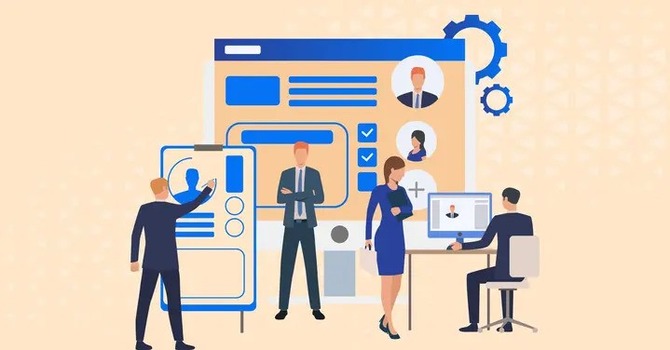Staffing Software: The Future of Recruitment

Staffing software is transforming how companies approach hiring. In an era where efficiency and speed are critical to finding the right talent, leveraging technology has become a competitive advantage. This comprehensive guide will explore the various aspects of staffing software, its features, benefits, and the future trends shaping recruitment technology.
What is Staffing Software?
Staffing software refers to digital platforms that help businesses manage the entire recruitment lifecycle. These platforms automate tasks such as job posting, candidate tracking, resume screening, and even onboarding. With the ability to handle multiple stages of the hiring process, staffing software streamlines recruitment efforts and saves companies time and money.
Types of Staffing Software
Staffing software can be categorized into different types based on their functionalities and the needs they address:
1. Applicant Tracking Systems (ATS)
Top ats systems is designed to help companies manage their recruitment pipeline by tracking applicants through various stages, from application to hire.
2. Recruitment Management Systems (RMS)
RMS offers a broader solution for managing the entire hiring process, including candidate sourcing, screening, and hiring.
3. Onboarding Software
Onboarding tools streamline the process of integrating new employees into the company, managing documentation, compliance, and training.
4. Scheduling and Workforce Management Tools
These tools help with employee shift scheduling and time management, especially useful for industries with dynamic work hours like healthcare or retail.
Core Features of Staffing Software
Here are some essential features you should look for when choosing a staffing software solution:
1. Job Posting Automation
Staffing software allows businesses to post job openings to multiple platforms—such as job boards and social media—with just a few clicks, significantly expanding the reach of job advertisements.
2. Resume Parsing and Filtering
This feature scans through resumes and automatically extracts essential information, making it easier for recruiters to sift through applicants based on experience and qualifications.
3. Communication Tools
Automated messaging features keep candidates informed about their application status, interview scheduling, and next steps in the process.
4. Workflow Customization
Tailoring workflows according to your specific hiring needs is an important function of staffing software, ensuring that internal processes align with company goals.
5. Advanced Analytics
Analytics tools provide insights into your hiring process, such as time-to-hire and cost-per-hire, allowing you to make data-driven decisions.
Advantages of Staffing Software
Adopting staffing software brings many benefits, improving both efficiency and hiring outcomes:
1. Faster Hiring Process
By automating administrative tasks, staffing software significantly reduces the time it takes to move candidates through the recruitment pipeline.
2. Improved Collaboration
Staffing software serves as a centralized platform where HR teams and hiring managers can collaborate effectively, ensuring everyone stays aligned.
3. Enhanced Candidate Experience
With streamlined processes and timely communication, candidates enjoy a better experience, making it easier to attract and retain top talent.
4. Informed Decision-Making
Access to comprehensive data and analytics helps businesses make smarter hiring decisions, leading to better outcomes.
AI and Staffing Software
Artificial Intelligence (AI) is increasingly becoming an integral part of staffing software, adding advanced functionalities to improve efficiency:
1. Automated Candidate Matching
AI tools can automatically match candidates to job postings based on their experience and qualifications, saving recruiters hours of manual screening.
2. Predictive Analytics
By analyzing historical data, AI can predict which candidates are most likely to succeed, helping recruiters make more informed decisions.
3. Chatbots for Candidate Engagement
AI-driven chatbots can engage with candidates 24/7, answering questions, providing updates, and ensuring a more responsive recruitment experience.
Cloud-Based vs. On-Premise Staffing Software
Staffing software is available in two main forms: cloud-based and on-premise.
1. Cloud-Based Staffing Software
Cloud-based solutions are hosted on the internet, allowing businesses to access the software from any location. These systems are generally easier to set up and maintain.
2. On-Premise Staffing Software
On-premise software is installed locally on a company’s servers, offering greater control over data and security, but often comes with higher upfront costs and maintenance requirements.
How to Choose the Right Staffing Software
Choosing the right staffing software can make a big difference in recruitment efficiency. Here are some factors to consider:
1. Business Size and Hiring Volume
For small businesses with fewer hires, a basic ATS may suffice, while larger enterprises may need more robust systems that handle high-volume recruitment and include features like workforce management.
2. Budget
Cloud-based solutions typically have lower upfront costs but come with subscription fees, whereas on-premise solutions might require significant initial investments.
3. User-Friendliness
Ease of use is crucial. Make sure the software is intuitive so that HR teams and hiring managers can adopt it without much hassle.
4. Customer Support
Ensure the software provider offers excellent customer support, including training, setup assistance, and ongoing technical help.
Top Staffing Software in 2024
Several leading staffing software solutions are dominating the market in 2024. Here are some of the top contenders:
1. Greenhouse
Greenhouse is a highly customizable ATS known for its robust analytics features. It’s suitable for large enterprises that require detailed recruitment insights.
2. Workable
Workable offers AI-driven features that make it ideal for mid-sized businesses. Its user-friendly interface and advanced functionality make it a popular choice.
3. JazzHR
JazzHR is designed for small businesses and offers core functionalities at an affordable price. It’s a great option for companies looking to scale without breaking the bank.
Challenges of Implementing Staffing Software
While staffing software offers significant benefits, there are also challenges to be aware of:
1. Cost
Some solutions, particularly on-premise ones, can be costly to implement and maintain, particularly for small businesses.
2. Resistance to Change
Employees and managers might resist adopting new technology. Ensuring proper training and highlighting the benefits of the software can help alleviate this issue.
Trends in Staffing Software for 2024
Recruitment technology is evolving rapidly. Here are some trends shaping the future of staffing software:
1. AI and Machine Learning
AI is playing a bigger role in automating tasks like candidate screening and job matching, making hiring processes more efficient.
2. Mobile-Optimized Platforms
With more job seekers applying for positions via smartphones, staffing software is being optimized for mobile to enhance candidate experience.
3. Social Media Integration
Staffing software is increasingly integrated with social media platforms, helping recruiters tap into passive talent pools.
Conclusion
Staffing software has revolutionized recruitment, offering tools that not only streamline the hiring process but also improve candidate experience and decision-making. Whether you’re a small business or a large enterprise, leveraging staffing software can significantly enhance your ability to attract and hire top talent.
FAQs
1. What does staffing software do?
Staffing software automates the recruitment process, including job posting, application management, interview scheduling, and onboarding.
2. How does AI improve staffing software?
AI helps automate candidate matching, screening, and engagement, allowing recruiters to make faster and more informed hiring decisions.
3. Should small businesses invest in staffing software?
Yes, even small businesses can benefit from staffing software by streamlining their hiring processes and improving efficiency.
4. What’s the difference between cloud-based and on-premise staffing software?
Cloud-based software is hosted online, allowing access from anywhere, while on-premise software is installed on local servers and offers more control but requires more maintenance.
5. Why is mobile optimization important in staffing software?
Mobile optimization allows job seekers to apply for positions using their smartphones, improving their experience and expanding the talent pool.


